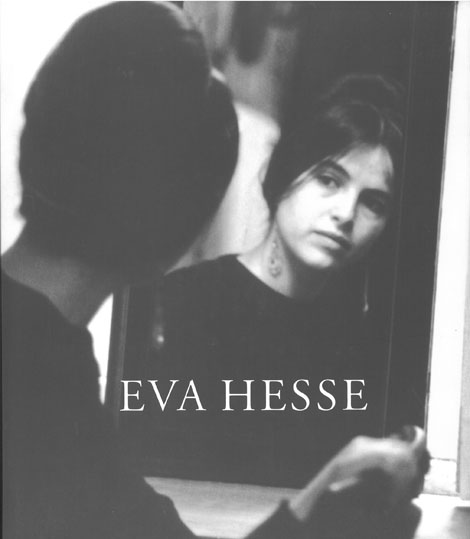 Eva Hesse | KUKJE GALLERY
Eva Hesse | KUKJE GALLERY

Oct 5, 2004 - Nov 27, 2004
K1
Seoul
INTRODUCTION
Eva Hesse is an icon of 1960s American art, whose work was crucial for upcoming generations. The focus of the present Eva Hesse exhibition in Vienna is on those works which were created in the years 1964/65, during her stay in Germany - the country she and her family had been forcibly expelled from in 1938.
Hesse's return had come about as the result of the invitation of the industrialist and art collector Fredrich Arnhard Scheidt to her husband, the sculptor Tom Doyle, and herself. The couple spent the time from June 1964 to August 1965 in Hesse's native country, sharing a large studio in an abandoned textile factory of Scheidt's in Kettwig-on-the Ruhr near Essen. The time spent in Germany was to prove a benchmark period both in Hesse's personal and artistic development. It marks a kind of methodological turning point in her work - a move away from painting and drawing towards colleges and sculptural, plastic art works. On the content side, it marked a reduction of figural elements in favor of a linear and monochromatic minimalisation.
The exhibition at the Kusnsthalle Wien shows 60 drawings, collages, gouaches and reliefs from the time before and during her sojourn in Germany, as well as some of the works, which came into being immediately after her return to States. These letter works tend to pick up motifs from the Kettwig days, further concentrating them and! thus pointing towards Hesse's mature, post-minimalist-inspired work, cut short in mid-stride by her early death at the age of 34.
The first series of drawings generated in Germany comprises collages of an Abstract-Expressionist colouration, "wild space", as Hesse wrote to her friend Sol LeWitt in a letter of 18 March, 1965. Subsequently, the drawings became more structured, the space being filled with a grid-like structure of squares of a sort that Hesse had been using repeatedly since the beginnings ! of her career as an artist. From these would emerge figuratively organ ic and machine-like elements. Finally, in her crystalline, linear "machine drawings", inspired by objects left lying around the abandoned factory halls, Hesse would entirely liberate herself from the constraints of space. Eventually, this phase of formal reduction - Hesse speaks of the "nonsense", of the disregard for meaning which governs these drawings - would lead to her th! ree-dimensional relief objects, which marked the decisive break-through in Hesse's development towards becoming a sculptor. The powerful use of colours, so characteristic of the entire period of her stay in Germany, is gradually placed by a more mellow monochromaticism.
Over the past few years Kunsthalle Wien has aimed to present important art reference figures of the 1960s and 1970s and also, if possible, to bring out as-yet-unpublished writings of those artists. As a companion to the Eva Hesse exhibition, therefore, a publication of datebooks from the artist's time in Germany, translated for the first time and fitted with a commentary, as well as a catalogue featuring the works created during this period, have scheduled to appear. Both works offer revealing insights into a phase of individual and artistic transformation of the artist. Beyond that they may also, thanks to the critical commentary, be read as detailed documents of the t! imes.
The diaries and datebooks, beyond offering crucial insights into the artistic challenges faced by Eva Hesse, also bear eloquent witness of her inward personal conflicts and the temporary irreconcilability of her aim of wanting to lead a self-determined life as a woman artist and at the same time being the wife and homemaker of a successful sculptor. "I cannot be so many things. I cannot be something of everyone... Woman, beautiful, artist, wife, housekeeper, cook, saleslady, all these things. I cannot even be myself nor know what I am."
While it is true that Eva Hesse's central point of residence and work was based in Kettwig-on-the Ruhr, her datebooks reveal a lively traveling activity shared with Tom Doyle during this time. Journeys took them to Brussels, Paris, Rome, Majorca, and regular trips were made to exhibition openings in Berne, Basel, Zurich, Dusseldorf, etc. Hesse and Doyle found themselves, during their sojourn in Europe, continuously at the centre of the confluence of diverse directions in the European and American avant-gardes. This mixture created ! the foundation upon which Hesse's forms of expressions were honed to a level of precision.
The exhibition, as much as the catalogue and the datebooks now published for the first time, offer a rare opportunity to reference the personal nations of an artist in conjunction with the work. mirroring thoughts and encounters which pushed along the transformational process of her art.
에바 헤세는 1960년대의 미국 미술의 우상(icon)이며, 그녀의 작품은 다음 세대들에게 중대한 영향을 미쳤다. 이번 전시는 그녀가 독일에서 머물렀던 1964년~65년 동안 제작된 작품들에 초점을 맞추어 전시 되었던 비엔나에서의 전시(2004년 3월 5일~5월 23일)를 한국에서 보여주고자 하는 국제갤러리의 열망으로 열리게 되었다. 독일은 헤세와 그녀의 가족들이 1938년 이후로 강제로 추방당한 곳이다.
당시 기업가이자 아트 컬렉터인 프리드리히 아른하르트 샤이드트(Friedrich Arnhard Scheidt)는 헤세와 그녀의 남편인 조각가 톰 도일(Tom Doyle)을 초청하여 그녀가 귀환할 수 있도록 했다. 헤세 부부는 1964년 6월부터 1965년 8월 까지 그녀의 고국에서 생활했으며, 에셍 (Essen)부근에 있는 샤이드트의 케트비히 온더 루르 (Kettwig-on-th-Ruhr)의 버려진 방직 공장을 작업실로 삼았다. 독일에서의 시기는 헤세의 개성적이고 예술가적인 발전 단계를 보여주는 표준 시기로 입증되었다. 이 시기는 그녀의 작업에서 일종의 방법론적인 전환점으로서, 회화와 드로잉에서 벗어나 꼴라쥬와 조각적이고 조형적인 예술작품들로 향하는 전환을 보여준다. 내용적인 측면에서, 선적이고 단색조의 미니멀적인 표현을 위하여 구상적인 요소들을 제거했음을 나타낸다.
비엔나 미술관(Kunsthalle Wien)에서의 전시는 그 시기 이전과 독일에서의 체류 동안에 제작되었던 60개의 드로잉, 꼴라쥬, 과슈, 그리고 부조 등을 보여준다. 더욱이 몇몇 작품들은 그녀가 고국으로 귀환 후 즉시 만들어졌던 것들이다. 케트비히(Kettwig)시절로부터 모티브를 가져온 이러한 후기 작품들은, 헤세의 성숙기이자 후기 미니멀리스트들에게 영감을 준 것들이며, 34세의 나이에 일찍 죽음을 맞이하였던 짧은 생애를 포함하고 있다.
독일에서 작업한 첫번째 드로잉 연작들은 추상표현주의자의 색채를 꼴라쥬 하였으며, 헤세가 1965년 3월 18일에 솔 르윗(Sol LeWitt)에게 보낸 편지 내용처럼 "거친 공간(wild space)"을 보여준다. 그 결과 그녀가 화가로서 작업한 이래로, 드로잉들은 더욱 구조적으로 나타났으며, 공간은 정사각형의 일종인 그리드(격자)구조의 반복적인 사용으로 채워졌다. 이때부터 유기적이며 기계적인 요소들이 조형적으로 나타났다. 그리고 그녀의 투명한(crystalline) 선의 기계 드로잉(Machine dawing)은, 버려진 공장의 홀에 널려져 있던 오브제로부터 영감을 받은 것이다. 마침내 헤세는 공간의 압박으로부터 완전히 해방되었다. 형식에 얽매이지 않는 이러한 양상으로 헤세는 이러한 드로잉을 지배하는 의미에 대한 무시로서 'nonsense'에 대해 말했다. 그녀는 3차원의 부조 오브제를 만들었고, 이것은 조각가가 되기 위한 결정적 극복을 보여준다. 색의 효과적인 사용은 독일에 머물렀던 기간의 특징이라고 할 수 있고, 이것은 점차적으로 더 부드러운 단색조로 대체되었다.
지난 몇 년 동안 비엔나 미술관은 1960년대와 70년대의 중요한 작품을 보여주고자 노력하였고, 이에 작가들의 출간되지 않았던 글들을 전시와 함께 펴내는 작업도 완성하였다. 비엔나 전시에서 비로서 에바 헤세의 독일에서의 일기 및 메모책이 출간되게 된 것이다. 또한 카타로그에서는 이 시기 동안 창작된 작품들을 특색 있게 다루고 있고 이는 국제갤러리에서의 도록 출판의 훌륭한 본보기가 되어 주었다. 이러한 자료들은 작가의 개인적인 양상과 예술가적인 변화에 날카로운 통찰력을 제공하고 있고 당대의 세부적 기록들을 보여준다.
에바 헤세는 그녀의 일기와 노트에서 예술가적 도전으로 중대한 통찰력을 보여주었고, 또한 그녀의 내면의 개인적 갈등을 설득력 있게 표현하였으며, 여성 아티스트로서 그리고 동시에 아내로서 , 그리고 성공한 조각가이자 주부로서 자신이 결심한 생활을 이끌고자 원했던 목표의 모순성을 담아냈다. "나는 많은 것들을 가질 수 없다… 여성, 아름다움, 아티스트, 아내, 주부, 요리사, 여성 판매원, 이러한 모든 것들. 나는 심지어 내 자신이 무엇인지도 알 수 없다."
에바 헤세가 케트비히 온더 루르(Kettwig-on-th-Ruhr)를 주요 거주지로 삼고 있는 동안, 그녀는 작가 노트에서 톰 도일과 활발한 여행을 했다는 것을 생생하게 기록하고 있다. 그들은 브뤼셀, 파리, 로마, 마조르카를 여행하였고, 베른, 바젤, 취리히, 뒤셀도르프 등지에서 전시 오프닝에 참가하는 짧은 여행을 했다. 헤세와 도일은 유럽에서 체류하는 동안에, 그들 자신이 유럽과 미국의 아방가르드 안에서 다양성을 지닌 이들의 중심이 되도록 했다. 이러한 혼합은 헤세가 만들어내는 형태의 표현에 근거해 창조되었고 정밀한 단계를 향해 기량을 연마하였다.
Hesse's return had come about as the result of the invitation of the industrialist and art collector Fredrich Arnhard Scheidt to her husband, the sculptor Tom Doyle, and herself. The couple spent the time from June 1964 to August 1965 in Hesse's native country, sharing a large studio in an abandoned textile factory of Scheidt's in Kettwig-on-the Ruhr near Essen. The time spent in Germany was to prove a benchmark period both in Hesse's personal and artistic development. It marks a kind of methodological turning point in her work - a move away from painting and drawing towards colleges and sculptural, plastic art works. On the content side, it marked a reduction of figural elements in favor of a linear and monochromatic minimalisation.
The exhibition at the Kusnsthalle Wien shows 60 drawings, collages, gouaches and reliefs from the time before and during her sojourn in Germany, as well as some of the works, which came into being immediately after her return to States. These letter works tend to pick up motifs from the Kettwig days, further concentrating them and! thus pointing towards Hesse's mature, post-minimalist-inspired work, cut short in mid-stride by her early death at the age of 34.
The first series of drawings generated in Germany comprises collages of an Abstract-Expressionist colouration, "wild space", as Hesse wrote to her friend Sol LeWitt in a letter of 18 March, 1965. Subsequently, the drawings became more structured, the space being filled with a grid-like structure of squares of a sort that Hesse had been using repeatedly since the beginnings ! of her career as an artist. From these would emerge figuratively organ ic and machine-like elements. Finally, in her crystalline, linear "machine drawings", inspired by objects left lying around the abandoned factory halls, Hesse would entirely liberate herself from the constraints of space. Eventually, this phase of formal reduction - Hesse speaks of the "nonsense", of the disregard for meaning which governs these drawings - would lead to her th! ree-dimensional relief objects, which marked the decisive break-through in Hesse's development towards becoming a sculptor. The powerful use of colours, so characteristic of the entire period of her stay in Germany, is gradually placed by a more mellow monochromaticism.
Over the past few years Kunsthalle Wien has aimed to present important art reference figures of the 1960s and 1970s and also, if possible, to bring out as-yet-unpublished writings of those artists. As a companion to the Eva Hesse exhibition, therefore, a publication of datebooks from the artist's time in Germany, translated for the first time and fitted with a commentary, as well as a catalogue featuring the works created during this period, have scheduled to appear. Both works offer revealing insights into a phase of individual and artistic transformation of the artist. Beyond that they may also, thanks to the critical commentary, be read as detailed documents of the t! imes.
The diaries and datebooks, beyond offering crucial insights into the artistic challenges faced by Eva Hesse, also bear eloquent witness of her inward personal conflicts and the temporary irreconcilability of her aim of wanting to lead a self-determined life as a woman artist and at the same time being the wife and homemaker of a successful sculptor. "I cannot be so many things. I cannot be something of everyone... Woman, beautiful, artist, wife, housekeeper, cook, saleslady, all these things. I cannot even be myself nor know what I am."
While it is true that Eva Hesse's central point of residence and work was based in Kettwig-on-the Ruhr, her datebooks reveal a lively traveling activity shared with Tom Doyle during this time. Journeys took them to Brussels, Paris, Rome, Majorca, and regular trips were made to exhibition openings in Berne, Basel, Zurich, Dusseldorf, etc. Hesse and Doyle found themselves, during their sojourn in Europe, continuously at the centre of the confluence of diverse directions in the European and American avant-gardes. This mixture created ! the foundation upon which Hesse's forms of expressions were honed to a level of precision.
The exhibition, as much as the catalogue and the datebooks now published for the first time, offer a rare opportunity to reference the personal nations of an artist in conjunction with the work. mirroring thoughts and encounters which pushed along the transformational process of her art.
에바 헤세는 1960년대의 미국 미술의 우상(icon)이며, 그녀의 작품은 다음 세대들에게 중대한 영향을 미쳤다. 이번 전시는 그녀가 독일에서 머물렀던 1964년~65년 동안 제작된 작품들에 초점을 맞추어 전시 되었던 비엔나에서의 전시(2004년 3월 5일~5월 23일)를 한국에서 보여주고자 하는 국제갤러리의 열망으로 열리게 되었다. 독일은 헤세와 그녀의 가족들이 1938년 이후로 강제로 추방당한 곳이다.
당시 기업가이자 아트 컬렉터인 프리드리히 아른하르트 샤이드트(Friedrich Arnhard Scheidt)는 헤세와 그녀의 남편인 조각가 톰 도일(Tom Doyle)을 초청하여 그녀가 귀환할 수 있도록 했다. 헤세 부부는 1964년 6월부터 1965년 8월 까지 그녀의 고국에서 생활했으며, 에셍 (Essen)부근에 있는 샤이드트의 케트비히 온더 루르 (Kettwig-on-th-Ruhr)의 버려진 방직 공장을 작업실로 삼았다. 독일에서의 시기는 헤세의 개성적이고 예술가적인 발전 단계를 보여주는 표준 시기로 입증되었다. 이 시기는 그녀의 작업에서 일종의 방법론적인 전환점으로서, 회화와 드로잉에서 벗어나 꼴라쥬와 조각적이고 조형적인 예술작품들로 향하는 전환을 보여준다. 내용적인 측면에서, 선적이고 단색조의 미니멀적인 표현을 위하여 구상적인 요소들을 제거했음을 나타낸다.
비엔나 미술관(Kunsthalle Wien)에서의 전시는 그 시기 이전과 독일에서의 체류 동안에 제작되었던 60개의 드로잉, 꼴라쥬, 과슈, 그리고 부조 등을 보여준다. 더욱이 몇몇 작품들은 그녀가 고국으로 귀환 후 즉시 만들어졌던 것들이다. 케트비히(Kettwig)시절로부터 모티브를 가져온 이러한 후기 작품들은, 헤세의 성숙기이자 후기 미니멀리스트들에게 영감을 준 것들이며, 34세의 나이에 일찍 죽음을 맞이하였던 짧은 생애를 포함하고 있다.
독일에서 작업한 첫번째 드로잉 연작들은 추상표현주의자의 색채를 꼴라쥬 하였으며, 헤세가 1965년 3월 18일에 솔 르윗(Sol LeWitt)에게 보낸 편지 내용처럼 "거친 공간(wild space)"을 보여준다. 그 결과 그녀가 화가로서 작업한 이래로, 드로잉들은 더욱 구조적으로 나타났으며, 공간은 정사각형의 일종인 그리드(격자)구조의 반복적인 사용으로 채워졌다. 이때부터 유기적이며 기계적인 요소들이 조형적으로 나타났다. 그리고 그녀의 투명한(crystalline) 선의 기계 드로잉(Machine dawing)은, 버려진 공장의 홀에 널려져 있던 오브제로부터 영감을 받은 것이다. 마침내 헤세는 공간의 압박으로부터 완전히 해방되었다. 형식에 얽매이지 않는 이러한 양상으로 헤세는 이러한 드로잉을 지배하는 의미에 대한 무시로서 'nonsense'에 대해 말했다. 그녀는 3차원의 부조 오브제를 만들었고, 이것은 조각가가 되기 위한 결정적 극복을 보여준다. 색의 효과적인 사용은 독일에 머물렀던 기간의 특징이라고 할 수 있고, 이것은 점차적으로 더 부드러운 단색조로 대체되었다.
지난 몇 년 동안 비엔나 미술관은 1960년대와 70년대의 중요한 작품을 보여주고자 노력하였고, 이에 작가들의 출간되지 않았던 글들을 전시와 함께 펴내는 작업도 완성하였다. 비엔나 전시에서 비로서 에바 헤세의 독일에서의 일기 및 메모책이 출간되게 된 것이다. 또한 카타로그에서는 이 시기 동안 창작된 작품들을 특색 있게 다루고 있고 이는 국제갤러리에서의 도록 출판의 훌륭한 본보기가 되어 주었다. 이러한 자료들은 작가의 개인적인 양상과 예술가적인 변화에 날카로운 통찰력을 제공하고 있고 당대의 세부적 기록들을 보여준다.
에바 헤세는 그녀의 일기와 노트에서 예술가적 도전으로 중대한 통찰력을 보여주었고, 또한 그녀의 내면의 개인적 갈등을 설득력 있게 표현하였으며, 여성 아티스트로서 그리고 동시에 아내로서 , 그리고 성공한 조각가이자 주부로서 자신이 결심한 생활을 이끌고자 원했던 목표의 모순성을 담아냈다. "나는 많은 것들을 가질 수 없다… 여성, 아름다움, 아티스트, 아내, 주부, 요리사, 여성 판매원, 이러한 모든 것들. 나는 심지어 내 자신이 무엇인지도 알 수 없다."
에바 헤세가 케트비히 온더 루르(Kettwig-on-th-Ruhr)를 주요 거주지로 삼고 있는 동안, 그녀는 작가 노트에서 톰 도일과 활발한 여행을 했다는 것을 생생하게 기록하고 있다. 그들은 브뤼셀, 파리, 로마, 마조르카를 여행하였고, 베른, 바젤, 취리히, 뒤셀도르프 등지에서 전시 오프닝에 참가하는 짧은 여행을 했다. 헤세와 도일은 유럽에서 체류하는 동안에, 그들 자신이 유럽과 미국의 아방가르드 안에서 다양성을 지닌 이들의 중심이 되도록 했다. 이러한 혼합은 헤세가 만들어내는 형태의 표현에 근거해 창조되었고 정밀한 단계를 향해 기량을 연마하였다.
INSTALLATIONS
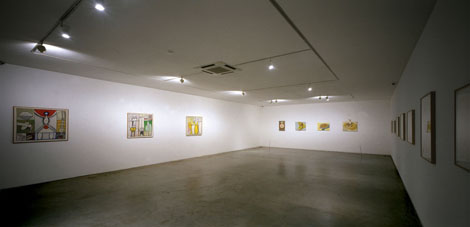
|
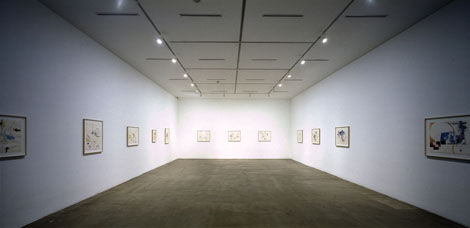
|
|
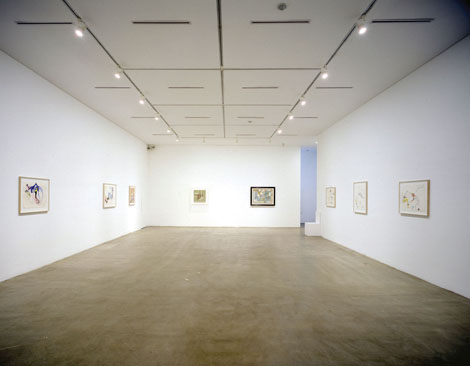
|
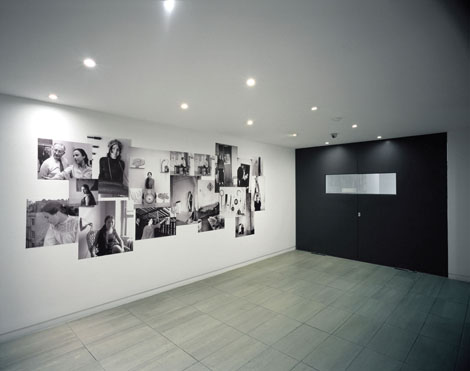
|
|
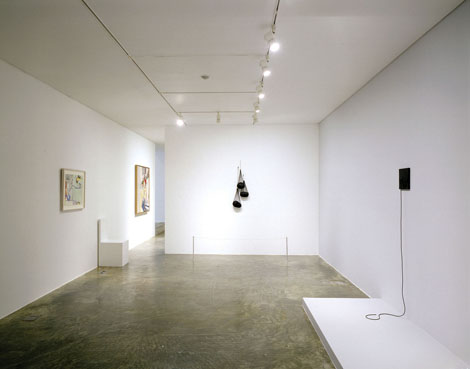
|
PUBLICATIONS
| Eva Hesse |
